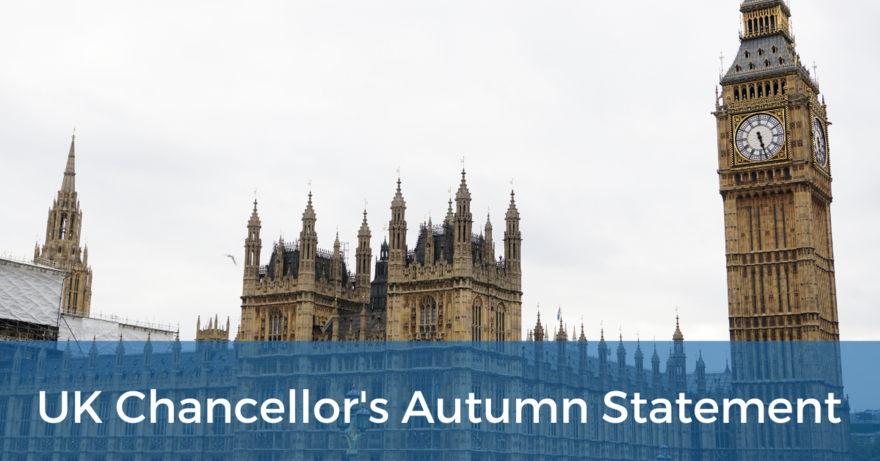UK Chancellor's Autumn Statement 2023: Key Takeaways for Small Business Owners

The UK Chancellor's Autumn Statement for 2023 brought a mix of tax reforms, business incentives, and regulatory changes that will impact small business owners across the UK. Here’s a look at what these changes mean for your business.
Personal and Employment Taxes:
A 2% cut in Class 1 employees’ National Insurance contributions from January 2024, reducing the rate to 10%. For example, individuals earning £35,000 annually will save £450.
Abolishment of Class 2 National Insurance for self-employed individuals earning more than £12,570, with a reduction in Class 4 National Insurance rates to 8% for earnings between £12,570 and £50,270 from April 2024.
Extension of employer National Insurance relief for veterans for another year.
Business Taxes:
Simplification of research & development tax relief by merging SME and RDEC schemes at a 20% rate.
Reforms in tax reliefs for Film, TV, and video games as refundable expenditure credits at a 39% rate from January 2024.
Permanent establishment of the full expensing regime for new qualifying plant & machinery expenditure.
Extension of tax reliefs in freeports for another five years.
Other Announcements:
Increase of the National Living Wage to £11.44 per hour from April 2024 for individuals aged 21 and over.
A new approach to the Construction Industry Scheme (CIS), including the digitalisation of CIS registration and adjustments in the review process.
Extension of the 75% business rates relief for hospitality, retail, and leisure businesses for an additional year.
The UK Chancellor's Autumn Statement for 2023 represents a significant shift in the landscape for small business owners, offering a blend of challenges and opportunities. On the positive side, the reduction in National Insurance contributions and the abolishment of Class 2 National Insurance for the self-employed are likely to provide some financial relief. These tax cuts could potentially increase disposable income for employees and reduce financial burdens for self-employed individuals, which is a boon in the current economic climate.
Similarly, the simplification of research and development tax relief and the reforms in tax reliefs for creative industries are set to stimulate innovation and growth in these key sectors. The permanent establishment of the full expensing regime for new plant and machinery expenditures is another welcome change, likely to encourage investment and modernisation among small businesses.
However, these positive developments come alongside challenges that require careful consideration. The increase in the National Living Wage, while beneficial for workers, will increase payroll expenses for many small businesses. This could be particularly impactful for those operating with tight budgets or in sectors with lower profit margins. Additionally, changes in the Construction Industry Scheme and the extension of business rates relief, though beneficial, will require businesses to adapt to new administrative and financial landscapes.
The Autumn Statement offers a mixed bag for small business owners. While it provides several tax breaks and incentives that could spur growth and alleviate some financial pressures, it also introduces changes that could increase operational costs. Navigating these developments effectively will require strategic planning and perhaps adjustments in business operations. As always, staying informed and possibly seeking advice from financial experts will be crucial for small businesses looking to capitalise on these changes while managing their potential impacts.


0 comments
Leave a comment